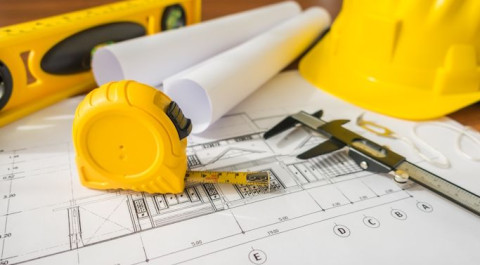Classification and definitions of property, plant and equipment according to the Polish Accounting Act and the international accounting standards
The most crucial issues in this respect include defining the rules for disclosing property, plant and equipment as well as establishing the initial value, depreciation charges and impairment losses.
Where should we look for information?
If we examine the Polish statutory regulations, we can find answers in the Polish Accounting Act1 and in National Accounting Standard (KSR) No. 42, while if we consider the provisions of the international accounting standards in this respect then the widest range of information is available in:
- IAS 16 Property, Plant and Equipment
- IAS 36 Impairment of Assets
- IFRS 5 Non-current Assets Held for Sale and Discontinued Operations
- IFRS 13 Fair Value Measurement.
In the light of Polish balance sheet law, the rules for entering property, plant and equipment in the books as well as the rules for their measurement and revaluation are set forth in Article 3, Article 31 and Article 32 of the Act, with Article 3(1)(15) of the Polish Accounting Act defining fixed assets as property, plant and equipment and equivalent assets with anticipated useful lives of longer than a year, complete, operational and intended to be used for the entity’s needs. They include in particular:
- real properties – including land, perpetual usufruct rights to land, buildings and structures, as well as commonhold units, machines, equipment, means of transport and other objects,
- improvements in external fixed assets,
- livestock.
In Article 3(1)(16) of the Polish Accounting Act, we can find information about fixed assets under construction, meaning fixed assets during their construction or assembly stages, recognised as non-current assets, as well as improvements to existing fixed assets.
According to Article 31 of the Polish Accounting Act, an initial value representing the purchase price or cost of manufacture of a fixed asset should be increased by the cost of its improvement, i.e. its alteration, development, modernisation or reconstruction, causing the use value of this fixed asset on completion of the improvement to exceed the use value it formerly had at the time of its acceptance for use, as measured by: period of use, manufacturing capacity, quality of the products obtained with the improved fixed assets, maintenance costs and other measures.
2. The initial value of fixed assets, with the exception of land other than that used for the opencast extraction of minerals, is reduced by depreciation charges made in order to account for their loss of value due to their wear or the passage of time.
The moment of depreciation commencement should be established by the entity in its accounting policy.
Article 32 of the Polish Accounting Act specifies how to apply depreciation charges:
- Fixed asset depreciation charges are applied by way of the systematic, scheduled distribution of the initial value over the pre-determined depreciation period. Depreciation commences not earlier than before the fixed asset is accepted for use and ends not later than once the total depreciation charges have equalled the initial value of the fixed asset, once the fixed asset is handed over for liquidation or sale, or once its deficiency is identified, with the net sale price of the remainder of the fixed asset, if any, to be taken into account.
- The depreciation period and the annual depreciation rate is determined based on the useful life of the fixed assets, as determined in particular by:
- number of shifts during which the fixed asset is operated;
- pace of technical and economic progress;
- efficiency of the fixed asset as measured by its hours of operation, number of manufactured products or another appropriate measure;
- legal or other limitations regarding the time of use of a fixed asset;
- liquidation net selling price of the material remainder or the fixed asset.
- The depreciation period or rate for a fixed asset must be established on the day on which it is accepted for use. An entity should periodically verify the correctness of the depreciation periods and rates.
- If the manufacturing technology changes or the fixed asset is intended for liquidation or to be decommissioned, or if other circumstances arise which make the fixed asset permanently lose its value, an appropriate impairment loss shall be charged to other operating costs.
The impairment loss can also be applied based on KSR 4.
“If, as at the balance sheet date arising from the books, the value of the measured asset is higher than the economic benefits to be brought thereby, as defined in line with this Standard, this means that the asset has completely or partially, as applicable, lost its ability to bring economic benefits to the entity, which results in the need to apply an impairment loss reducing its carrying amount as at the balance sheet date”3.
On the other hand, based on Annex 1 to the Polish Accounting Act of 29 September 1994 (as amended), we may classify fixed assets by type, using the balance sheet, item II of the assets, i.e. property, plant and equipment, where a strict division is presented:
Balance Sheet
Assets
A. Non-current assets
II. Property, plant and equipment
- Fixed assets
- land (including the perpetual usufruct right to land)
- buildings, premises, and rights to premises and civil engineering structures
- technical equipment and machines
- means of transportation
- other fixed assets
- Fixed assets under construction
- Prepayments for fixed assets under construction.
Below we have property, plant and equipment as construed by the International Accounting Standards:
According to IAS 16 “Property, Plant and Equipment,” some fixed assets may consist of parts which are significant in terms of value and differ from one another in terms of how and over what time they lose their value (often referred to as components). A building is a typical example of a fixed asset that consists of several components, with its walls being the most durable and the least prone to loss of value; however, it also has other components, such as the electrical system, sewage system, air-conditioning system, which are more prone to loss of value. According to § 43 of IAS 16, each part of an item of property, plant and equipment with a purchase price or cost of manufacture that is significant in relation to the total purchase price or cost of manufacture of the whole item shall be depreciated separately. This means that the entity strives to assign the initial value arising from the value of the whole fixed asset to its material components so that each of them can be depreciated separately. For instance, according to the IAS, it may be advisable to depreciate components separately notwithstanding whether they are owned by the entity or whether they are used by it, i.e. under financial lease agreements.
Comparing the definitions and classifications of property, plant and equipment arising from the Polish Accounting Act to the definition specified in the IAS has allowed us to identify a number of differences, as listed in Table 1.
Example 1
An entity purchases a wind turbine consisting of a mast worth PLN 400,000 and a generator worth PLN 600,000. The decision is made that the depreciation will be calculated according to a linear method, and the charges will be applied by way of the systematic, scheduled distribution of the initial value over the adopted period of useful life. The useful life is anticipated to be 20 years. The generator is efficient and its useful life may be shorter than that of the mast.
Let us calculate the annual depreciation value:
- According to the Polish Accounting Act,
- According to IAS regulations.
- According to the Polish Accounting Act, a fixed asset must be complete. We add the components and we get the initial value of the fixed asset (PLN 400,000 + 600,000 = 1,000,000).
Since the useful life has been established as 20 years, the annual deprecation rate is 5%, so the annual depreciation value is PLN 50,000.
- According to IAS regulations, we are dealing with components, and each of them should be settled separately. Assuming that the generator wears more quickly, we define the useful life as 15 years. We depreciate each component separately.
Mast: PLN 400,000, useful life of 20 years, annual depreciation rate of 5%, annual depreciation value of PLN 20,000.
Generator: PLN 600,000, useful life of 15 years, annual depreciation rate of over 6.66%, annual depreciation value of PLN 40,000.
This gives a difference of PLN 10,000 – the depreciation value being PLN 50,000 according to the Polish Accounting Act and PLN 60,000 according to the IAS.
|
No. |
DESCRIPTION |
POLISH ACCOUNTING ACT |
IAS |
|
1 |
Perpetual usufruct rights to land |
Fixed assets (Land) Article 3(1)(15) of the PAC |
Not specifically defined, the following can be applied: IAS 40 – Investment Properties, or IAS 17 – Leases |
|
2 |
Cooperative rights to premises |
Fixed assets (buildings) Article 3(1)(15) of the PAC |
Not specified, IAS 17 – Leases can be applied |
|
3 |
Depreciation of fixed assets, e.g. buildings |
Depreciation the same as for the whole fixed asset as a complete object |
Depreciation of components, differing in terms of the susceptibility to loss in value |
|
4 |
Spare parts |
Spare parts do not meet the prerequisites of fixed assets, they are not disclosed in this group |
Fixed assets (provided that they meet the criteria for fixed asset definition, e.g. a useful life of over one year (IAS 16 § 43) |
|
5 |
Fixed assets held for sale |
Fixed assets – no such items are singled out under the Act |
Non-current assets held for sale (IFRS 5; on condition that they are immediately merchantable in their current condition and the sale is highly probable) |
|
6 |
Fixed assets under construction |
Fixed assets – a separate item for fixed assets under construction, Annex 1 to the Act: BALANCE SHEET |
No such item is separated |
|
7 |
Advance payments for fixed assets |
Fixed assets – a separate item for advance payment for fixed assets, Annex 1 to the Act: BALANCE SHEET |
No such item is separated |
|
8 |
Animals in husbandry or breeding |
Fixed assets (livestock) |
Biological assets (IAS 41) |
|
9 |
Fixed asset revaluations to fair value |
There is no possibility for revaluation; it can only be achieved based on separate regulations |
In accordance with IAS 16 |
Task 1. Key phrases.
Read the text carefully and study the vocabulary. Translate the selected key words from the text into English:
środki trwałe: ........................................................................
prawa użytkowania: ..............................................................
moc produkcyjna: ................................................................
wartość początkowa: ............................................................
uszkodzenie: ..........................................................................
tracić na wartości: .................................................................
rozpoczynać: .........................................................................
nadający się do sprzedaży: ....................................................
roczny: ..................................................................................
podatny na: ...........................................................................
Task 2. Words in context.
Use the words from task 1 in correct forms to complete the sentences below:
It has already been announced that the International Committee of the Red Cross is determined ...................................................... its work on regulations concerning the protection of the victims of internal armed conflicts.
The technical definition of ...................................................... loss is a decrease in net carrying value, the acquisition cost minus depreciation, of an asset that is greater than the future of undisclosed cash flow of the same asset.
Experts believe, that some start-ups are more ..................................................... disappear from the marketplace than others, probably due to the fact that they do not offer innovative enough products which actually do not meet customers’ needs or expectations.
An item is viewed as ......................................................... is suitable for sale, and additionally it has to be reasonably fit for the basic purposes for which it was manufactured.
A widely used term in accounting, which encompasses assets and property which cannot be easily converted into cash, is known as ..........................................................
The ................................................................... of a plant is simply reflected by the amount of produced goods (so called output) over a specific time-span.
According to the Fair Credit Report Act , three major American credit reporting agencies (Equifax, Experian, TransUnion) are obliged to submit free ..................................................... reports to consumers.
By definition, the .......................................................... of fixed assets includes the acquisition price and all direct costs incurred to the effect of the purchase.
In most countries, land is the property of the state but farmers only have ..................................................... to cultivate it for their own purposes.
When the value of an asset decreases over a certain period of time, we can say that it ..................................................... considerably.
Task 3. Comprehension check.
Decide whether the sentences below are true (T) or false (F) according to the text:
To obtain the carrying value of fixed assets we need to consult four basic documents. ........
The definition of fixed assets in the Polish AA specifies four main categories. ........
Any alterations or improvements made to fixed assets decrease significantly their initial value. ........
Tax regulations do not impose any specific rules concerning the beginning of depreciation period. ........
The useful life of the fixed assets is subject to five crucial criteria listed in the article. ........
It is unnecessary to double check or change depreciation charges on a regular basis. ........
Fixed assets which are to be destroyed permanently in the future require certain extra costs to be deducted from the overall maintenance costs. ........
A different classification of fixed assets can be found in the Polish AA. ........
The depreciation of fixed assets consisting of several components can be assessed differently, depending on the regulations applied. ........
In terms of definitions, there is no discrepancy between nomenclature used to describe living creatures as fixed assets in the PPA and IAS. ........
Key to exercises.
| Task 1 | Task 2 | Task 3 |
|---|---|---|
| Fixed assets | Commence | T |
| Usufruct rights | Impairment | T |
| Manufacturing capacity | Prone to | F |
| Initial value | Merchantable | F |
| Impairment | Fixed assets | T |
| Depreciate | Manufacturing capacity | F |
| Commence | Annual | F |
| Merchantable | Initial value | T |
| Annual | Usufruct rights | T |
| Prone to | Has depreciated | F |
Przypisy / Źródła
- Polish Accounting Act of 29 September 1994, Journal of Laws of 2016, item 1047
- National Accounting Standard No. 4 (KSR 4) Loss of Asset Value
- J. Dadacz Krajowe Standardy Rachunkowości z ustawą o rachunkowości [National Accounting Standards with the Accounting Act], Gdansk 2012, p. 274-275

















